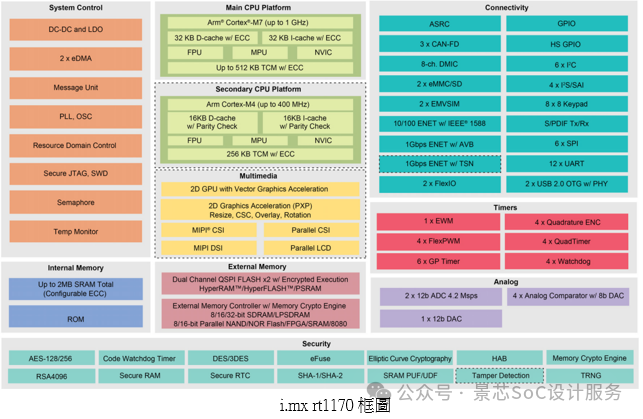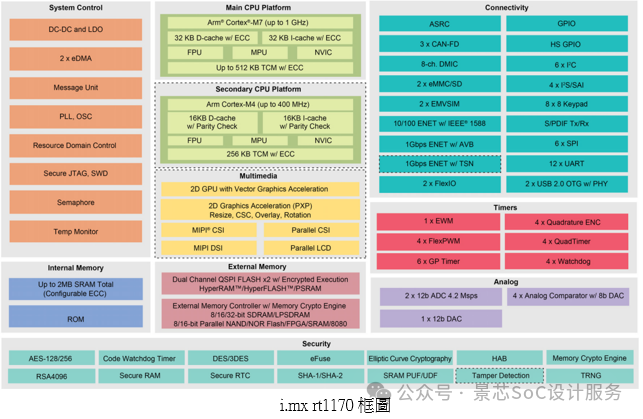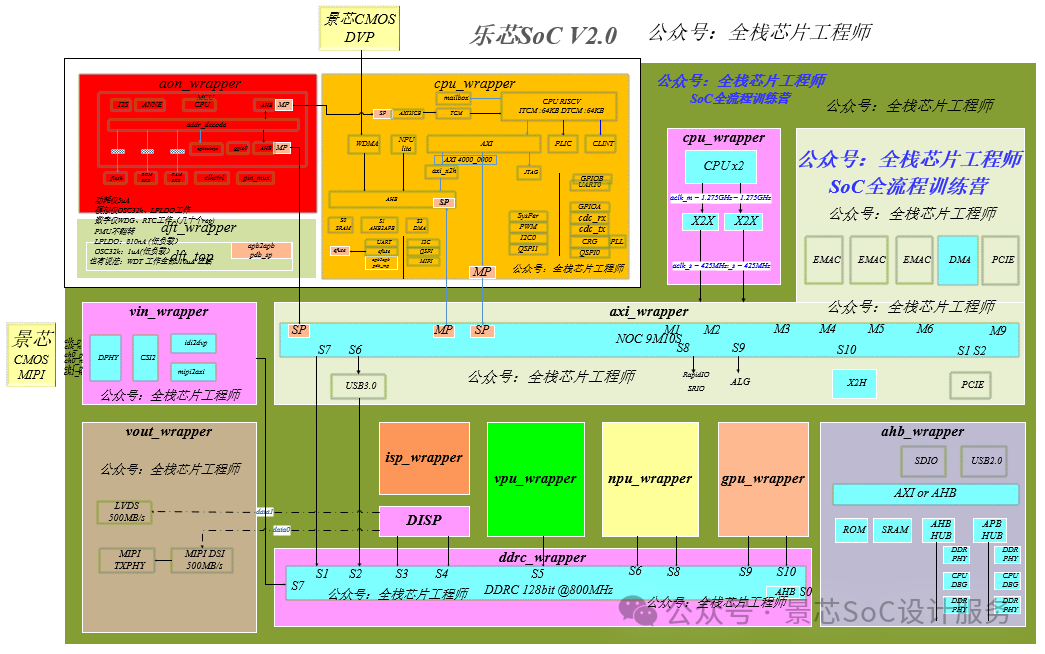The i.MX RT series is positioned as a “cross-boundary processor,” which is neither a traditional MCU nor a traditional MPU, but combines the advantages of both: Analysis of NXP Cross-Boundary MCUs: i.MX RT700/600/500 MCU Series 1. High Performance
It uses a Cortex-M7 core (up to 1 GHz) or a multi-core heterogeneous design (such as M7+M4), with a clock frequency ranging from 600 MHz to 1 GHz, achieving performance 2-3 times that of traditional Cortex-M4. 2. Real-time Capability: Interrupt response latency as low as 20 nanoseconds, suitable for real-time tasks such as industrial control and motor drive. 3. Low Cost: No built-in flash memory, reducing costs through external memory (such as QSPI Flash), while supporting XIP (executing code directly from external memory).

1. i.MX RT1170 Series
Dual-core 1GHz Cortex-M7 + 400MHz Cortex-M4, with M7 core performance reaching 5070 CoreMark, supporting ECC memory protection for higher reliability. It supports parallel processing of real-time control and high-performance computing.
Integrated MIPI CSI/DSI interfaces, supporting dual camera inputs and dual display outputs.
Built-in encryption engines (such as AES-128, SHA-256) and 3D facial recognition libraries, suitable for scenarios like smart locks.
Integrated 2D GPU acceleration engine, supporting high-resolution displays (such as industrial-grade touch screens).
Built-in EdgeLock security module, providing secure boot, memory encryption, and tamper-proof features. Suitable for industrial automation control, automotive dashboards, and high-end human-machine interaction interfaces (HMI).

2. i.MX RT1060/RT106V Series
Cortex-M7 core, clock frequency of 600MHz, equipped with 1MB on-chip SRAM and a 2D graphics acceleration engine.
Supports dual Gigabit Ethernet, 3x CAN-FD, camera interface (CSI), and LCD controller (up to WXGA resolution). Provides FreeRTOS and MCUXpresso toolchain support, suitable for rapid development. Applicable to smart appliances, industrial robots, and audio processing devices (such as conference systems and professional audio).
3. i.MX RT1050 Series Cortex-M7 core, clock frequency of 600MHz, supports external Flash and hardware encryption acceleration.
Equipped with a 24-bit RGB screen interface and a parallel camera interface, compatible with 7-inch touch screen displays (800×480 resolution).
Typical applications include 3D printers, industrial automation equipment, and high-precision motion control systems. The core advantages of NXP cross-boundary MCUs lie in their high-performance multi-core architecture, dedicated AI acceleration, low power design, and highly integrated peripherals, covering a wide range of fields from consumer electronics to industrial control. Complex IP designs such as DDR/PCIE/MIPI/ISP/NPU/VPU/CAN/USB/ETH.
Provides backend designs in 7nm, 12nm, 28nm, 40nm, 55nm, 65nm, and 90nm.
Offers customized chip design services and design training for universities and enterprises.

Recently, the Jingxin team customized several Cortex-A/M series SoC chips for clients, all of which were successful on the first attempt, proving the strength of the Jingxin SoC team! The Jingxin team will continue to refine SoC chip technology to prepare for the arrival of the AI SoC era; in the era of edge AI, the Jingxin SoC team will definitely succeed!